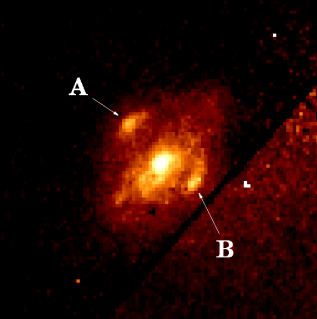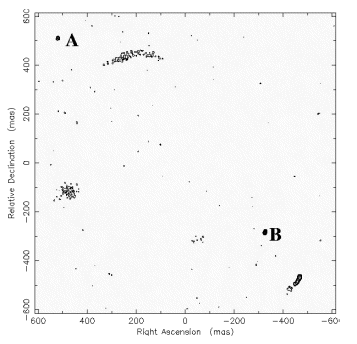Figure 11. Left: An infrared picture of the gravitational lens system
1933+504 made with the NICMOS camera system on the Hubble Space Telescope.
Two of the lensed images are marked A and B. The central bright spot
and the rest of the diffuse emission is associated with the intervening
galaxy. Right: By studying the distortions in lensed images, a model of
the mass distribution of the lensing galaxy can be determined. This
picture shows the radio intensity contours of the 1933+504 lens system,
made with the US Very Long Baseline Array, with images A and B marked.
The intervening lensing galaxy is not a strong radio source and hence
does not show in this picture. Various other extended images of the
distant radio source can be seen. However, the signal-to-noise ratio in
this picture is not high enough to show all the images which are known
to be present. Including the upgraded LT into all VLBI arrays will
improve their sensitivity and hence enable better mass models to be
calculated for all known radio-loud lens systems. |


